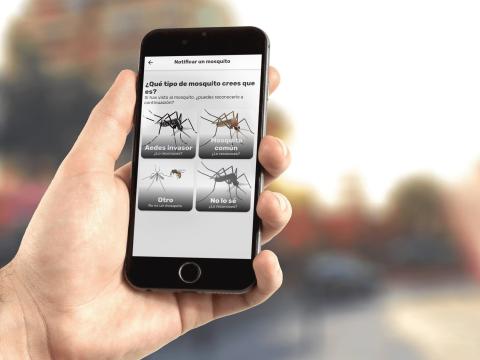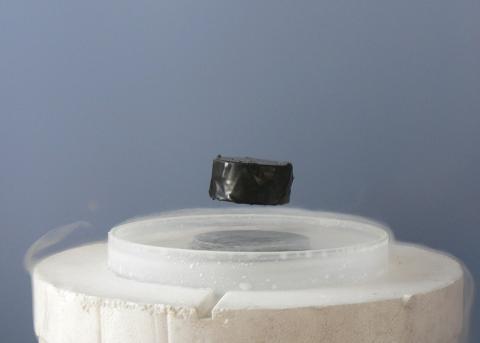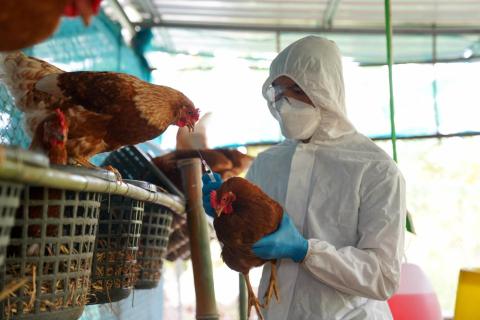Spanish National Research Council (CSIC)
If you are the contact person for this centre and you wish to make any changes, please contact us.
'Ramón y Cajal' postdoctoral researcher at the Biologial Mission of Galicia and head of the ECOP research group – Landscape Ecology
Senior Scientist at the Spanish Institute of Oceanography, IEO-CSIC
Virologist (senior scientist) at the Animal Health Research Centre (CISA, INIA-CSIC)
Researcher at the Instituto Cajal, CSIC
Doctor in Ecology and postdoctoral researcher at the National Museum of Natural Sciences (CSIC) in Madrid
Professor of Economics at Durham University (United Kingdom), Research Professor at the Spanish National Research Council (CSIC) and Lead Author of the International Cooperation chapter of the IPCC's AR6
Research professor at public research organisations at the CSIC Institute of History, in the Department of Archaeology and Social Processes
Researcher at the Institute of Public Goods and Policies of the CSIC (IPP-CSIC)
CSIC research professor and expert in food safety and water quality
Head of the Epidemiology and Environmental Health research group at CISA, INIA-CSIC.

A study in mice found "mild metabolic and neuropsychological malprogramming" in the offspring of females who, during gestation and lactation, had ingested emulsifiers, substances used to improve the texture of ultra-processed foods. The article, led by a team from IDIBAPS in Barcelona and published in PLoS Biology, states that the consumption during these periods of carboxymethylcellulose and polysorbate 80 - two common emulsifiers - diluted in water was associated with metabolic and cognitive deficits in the mouse offspring.

The decline of insects in Central and Western Europe in recent years is mainly due to human activities and the intensification of agriculture, according to a study funded by three companies (Bayer, BASF and Syngenta) that manufacture pesticides. The paper, published in PLoS ONE, summarises an analysis of 82 other published studies and explains the causes of population declines in two groups of insects: carabids (ground beetles) and lepidopterans (including moths and butterflies). The authors estimate that "anthropogenic activities in general" are most responsible for this decline, followed by agricultural intensification (including pesticides) and climate change in third place.

Today it is difficult to see science policies that do not mention citizen science or citizen participation in science. On World Mosquito Day, which is celebrated on August 20, we analyze what has been achieved by the Mosquito Alert project, based on citizen science and which the Ministry of Health has supported this summer within the framework of the National Plan for Disease Prevention, Surveillance and Control Transmitted by Vectors.

The fires in Hawaii, which have left at least a hundred dead and hundreds missing, have devastated entire towns and villages and have put the issue of how to prevent such intense fires back on the table. World Wildfire Prevention Day is celebrated this Friday 18 August. The increase in the occurrence and recurrence of large wildfires jeopardizes the resilience of socio-ecological systems. Efforts in prevention must be a priority and constant throughout the year. We have a joint responsibility as a society to face this unprecedented problem, which will worsen in the coming years.

Influenza A can cause influenza in humans, birds, pigs, and other mammals. In 2009 and 2010, a pandemic caused by the pdm09 strain—popularly called 'swine flu' because it contained genetic sequences from avian, swine, and human influenza—caused thousands of human deaths worldwide. Since then, this lineage has crossed over 370 times from humans to pigs in the United States, according to a study published in PLOS Pathogens. The research also indicates that the circulation of the virus among pigs may cause further evolutionary changes in this lineage, which would increase the risk of the virus passing back to humans.

A team of South Korean researchers claims to have achieved a superconductor at room temperature and pressure for the first time in history. If true, it would mean a revolution in physics with implications for the whole of society. The material, called LK-99, is based on a copper-doped lead apatite framework. The article is a preprint and can be read in the ArXiv repository, where the research community shares their work before it is reviewed for publication in a scientific journal.

According to a statement issued Monday by the World Health Organisation (WHO), Poland has reported that "unusual" cat deaths have been found in several areas of the country. Of the 47 samples tested (46 from cats and one from a caracal, another type of feline), 29 were positive for the avian influenza A(H5N1) virus. The surveillance period for all contacts has now ended and no contacts have shown symptoms. According to WHO, "sporadic A(H5N1) infections of cats have been reported previously, but this is the first report of a large number of infected cats in a large geographical area within a country".

The Anthropocene Working Group of the International Commission on Stratigraphy has proposed Crawford Lake in Canada as a reference site for studying the Anthropocene as a possible geological epoch. This proposal for a Global boundary and Stratotype Section and Point (GSSP) was presented today at the International Congress of Stratigraphy in Lille, France. It is a necessary, but not sufficient step for the Anthropocene to enter the International Chronostratigraphic Table, the worldwide reference for geological units. Once approved by the AWG, this proposal has to go through three more votes in international geological bodies.

The term Anthropocene describes the profound changes on Earth due to human activities in the past decades. The concept comes from geology but has spread to other areas and has sparked controversy within science. In this article, we provide some keys to understand what the Anthropocene is, and why there has been debate in recent days surrounding its possible declaration.

Although outbreaks of H5N1 avian influenza have reached record numbers in recent years, human infections remain anecdotal. A study published today in Nature identifies a protein responsible for inhibiting the replication of this virus in humans, while 'human' flus are able to evade it. The authors propose that this protein with antiviral activity evolved in primates and consider that resistance or sensitivity to it should be taken into account when assessing the zoonotic potential of avian influenza viruses.